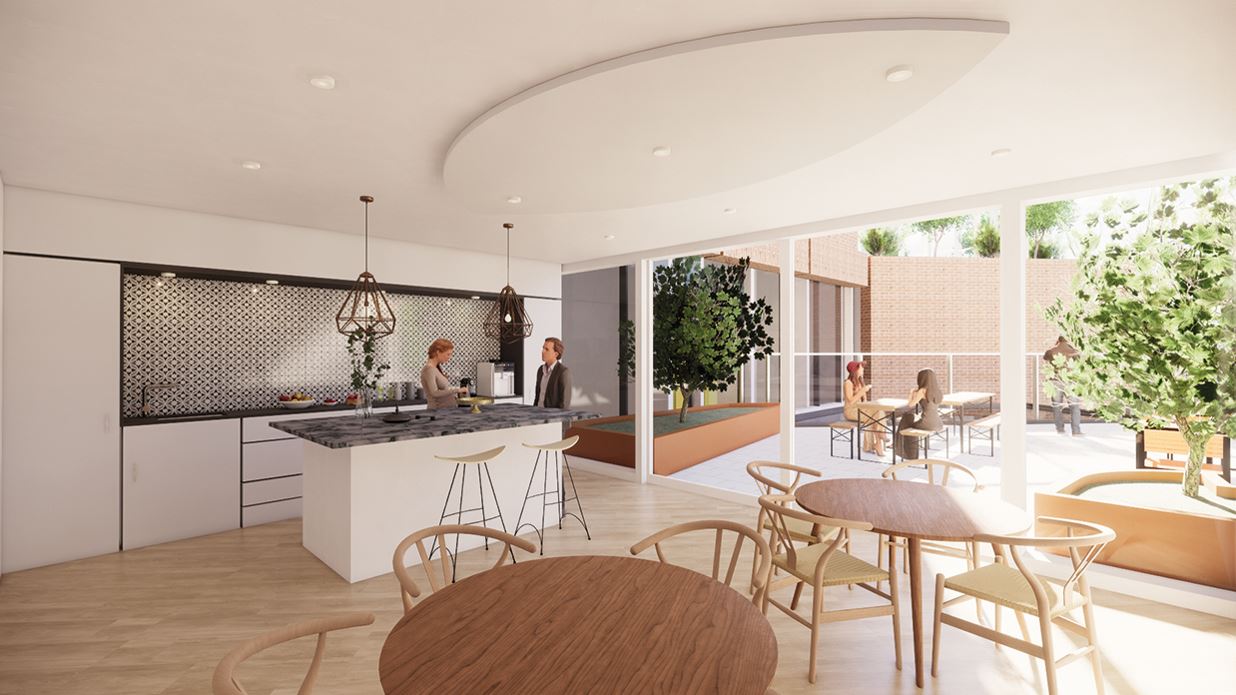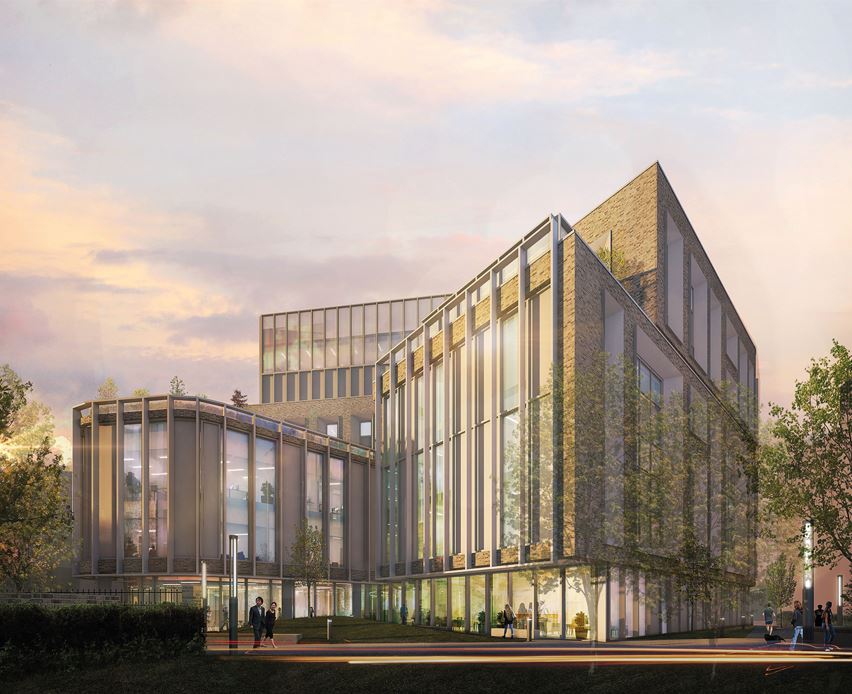
Most UK cities, and the buildings within them, are designed for more-predictable, temperate conditions – in short, for how our weather used to be.
But climate change has led to increased temperatures globally, and we must now address how we design public and private spaces to effectively respond to, and mitigate, the risks that come with weather extremes to ensure future-ready cities. And, as one of the most-critical parts of urban infrastructure, transforming how we design healthcare facilities offers many benefits, both in the short and long term, for both patients and the planet. “Creating healthy places goes hand in hand with achieving net-zero carbon targets and the need to decarbonise the built environment,” explains Geoff Southern, associate director at Arcadis IBI Group. “Health systems are responsible for approximately 4.6% of greenhouse gas emissions worldwide and this means we need to design our healthcare buildings and facilities in a way that minimises their carbon footprint and energy usage while still providing a comfortable and healing environment that has a positive impact on the wellbeing of patients, staff, and visitors.”
TAKING THE HEAT OFF
The UK’s cities, historically, were developed in a way that is too reliant on ‘average temperatures’, leaving them unprepared to deal with unpredictable weather like the well-documented flooding and heatwaves of recent years. In July 2021, the Met Office issued its first-ever Extreme Heat National Severe Weather Warning, with 1,634 deaths linked to a series of heatwaves that year. And this was followed by a ‘Red Warning’ in July 2022. “We have a responsibility to adjust our cities and buildings accordingly, to be able to withstand these episodes with greater agility,” said Southern. “Not least because the ramifications of the climate crisis, such as intensifying heat, are most dangerous for society’s more-vulnerable members, including older adults or those with underlying medical conditions.” Cities are likely to struggle more with rising temperatures as they are denser and more heavily populated – a problem compounded by the gradual shift from soft landscape to hard road surfaces and the consequently higher reflectivity of roads and buildings. Southern said: “One solution to managing episodes of extreme heat is putting more natural elements at the heart of any new developments, as outlined in the Greater London Authority’s greening policy laid out within the London Plan. “This can be successfully applied to healthcare settings by incorporating green walls or roofs, more-natural landscaping, and biophilic design from the earliest stages of a project. “Thoughtful planting can provide a cooling effect, shade, and shelter from rain or wind, and lower the reflectivity of heat. Further, opting for natural materials with low embodied carbon, and which lend themselves well to insulation, can reduce the overall environmental impact, but also regulate temperatures.” This was precisely the approach taken at Pears Maudsley Centre for Children & Young People, which was delivered by Arcadis IBI Group for South London and Maudsley NHS Foundation Trust. “An additional bonus of being in closer proximity to greenery is its proven wellbeing and anxiety-reducing advantages, meaning that healthcare settings can manage more-extreme external conditions while boosting the therapeutic function that is their primary goal,” explains Southern. “Plenty of research shows that people heal faster in ‘green’ hospital buildings – those featuring green landscaping, green walls or roofs, and indoor biophilic design elements – and that covering a roof with plants creates insulation that can cut the amount of energy needed to cool the building in hotter months by up to 33%. “It’s a win-win solution.” He adds: “Ensuring thermal comfort in hospitals is critical to enabling better recuperation as well as staff wellbeing and productivity, but optimum temperature levels vary and can be critically important in some cases. “Operating theatres, for example, require their own carefully-controlled environment; and that is where advanced innovative technology and sensors play a critical role in supporting temperature customisation of individual spaces, according to their specific needs.”
STRIVING FOR ENERGY EFFICIENCY
During periods of overheating, the electrical grid can become overburdened and unreliable, causing blackouts. And, in a hospital, such disruptions pose too big of a risk. “Addressing this challenge requires interventions at the city and national levels, such as using more renewable energy, battery storage, and indeed sharing resources across a healthcare estate by creating a smart grid,” said Southern. “A smart grid can complement other power sources in a hospital and act as a back-up in case of outages, which provides financial benefits as it can cut energy costs. “Moreover, wind or solar energy can make the most of extreme weather and turn it into a positive for a more-sustainable built environment.” Other design solutions, with more immediate payoffs, include looking at more-effective insulation as well as maximising natural ventilation as part of a Passivhaus approach to cooling. “Water features, which act as natural air conditioners, have been used for hundreds of years to cool indoor and outdoor spaces with the water evaporating in times of higher temperatures,” said Southern. “These measures can be complemented with low-carbon heating or cooling technology, such as air source pumps, to improve energy efficiency. “Meanwhile, the use of water-retaining roofs and sustainable urban drainage systems (SUDS) can defend against flooding by limiting water flow into the main drainage system - an approach also taken at the Pears Maudsley Centre for Children & Young People. “With climate issues ever changing, and indeed worsening, it is imperative that we shift the way we respond to them by designing more-resilient healthcare facilities and infrastructure. “Only then can we build more-sustainable and healthier cities and spaces.”


